V Model in Software Development: Process, Pros & Cons

V model in software development life cycle is a simple variant of the traditional waterfall software development model, often used for developing large projects, and follows a sequential path of execution of processes. Your choice of software development life cycle gives you flexibility at your convenience. There are numerous approaches that ensure smooth operation and overcome specific challenges, yet still comply with software development life cycle phases, which originate as “software development life cycle models”.
One of the most popular approaches is the V model, which is suitable for large and complex projects. In this guide, Newwave Solutions will cover all the basic knowledge of the V-model in software development life cycle, including its process, advantages, and disadvantages. Now, let’s dive right in!
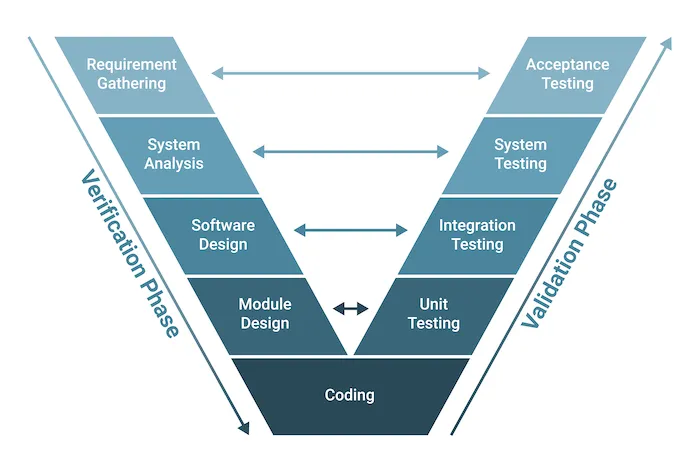
What is the V model in Software Development?
The V model in software development is a structured methodology that pairs each phase of development with a corresponding testing phase, forming a shape like the letter “V”. It emphasises both verification (building the product correctly) and validation (building the right product) throughout the lifecycle. For enterprise and outsourced projects, the V-model adds rigorous quality assurance and traceability, making it suited for large-scale, high-reliability systems.
Example:
One real-world example of applying the V-Model in software development is Medtronic, a global leader in medical device technology. They use the V-Model to develop their medical software, ensuring that every development phase corresponds with strict verification and validation steps, which helps them meet regulatory standards and deliver highly reliable, safe products.
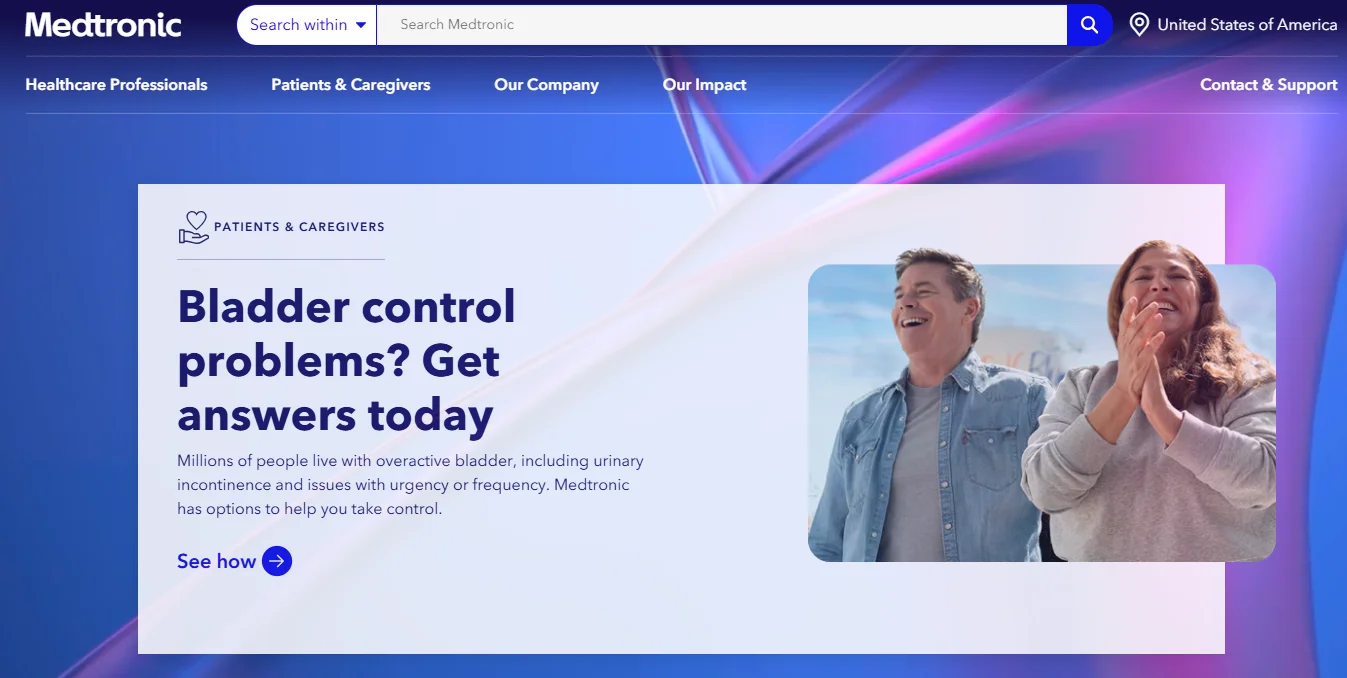
How the V model works in software development
The V model is divided into two main tracks—verification on the left side and validation on the right—each addressing specific activities of design and test, respectively. Below is a detailed breakdown of each major phase.
V-model Verification Phases
- Business Requirement Analysis: In this stage, the project team gathers and analyses business and user requirements, documenting clear acceptance criteria, and thus setting a foundation for later testing.
- System Design: The organisation defines the overall architecture of the system, including modules, interfaces, and technology choices, ensuring that the design aligns with business needs and technical constraints.
- Architectural design: This involves creating a comprehensive blueprint of the overall system, specifying its key components, their interactions through interfaces, and the flow of data within the system. It includes critical decisions about the choice of technologies and the structural framework that will support scalability, performance, and maintainability, ensuring a cohesive and efficient foundation for the subsequent development stages.
- Detailed Design (Module Design): Engineers break down system architecture into specific modules, define data flows, logic, and interfaces, thereby preparing each unit for development and future test mapping.
- Coding (Implementation): Developers translate detailed designs into code, following standards and then handing off to the next phase, where unit test planning is already in place; this base phase connects both verification and validation tracks.
V-model Validation Phases
- Unit Testing: Testers verify each individual module in isolation to ensure it functions correctly according to its specifications, which aligns with the detailed design phase and catches defects early.
- Integration Testing: The combined modules are tested together to validate their interaction, data exchange, and collective behaviour, matching the architecture and system design steps.
- System Testing: The entire system is tested against the defined requirements, confirming that functional and non-functional expectations are met across the system.
- Acceptance Testing: The final validation phase, where the product is evaluated in the user or production-like environment to ensure the software meets end-user needs and business objectives.
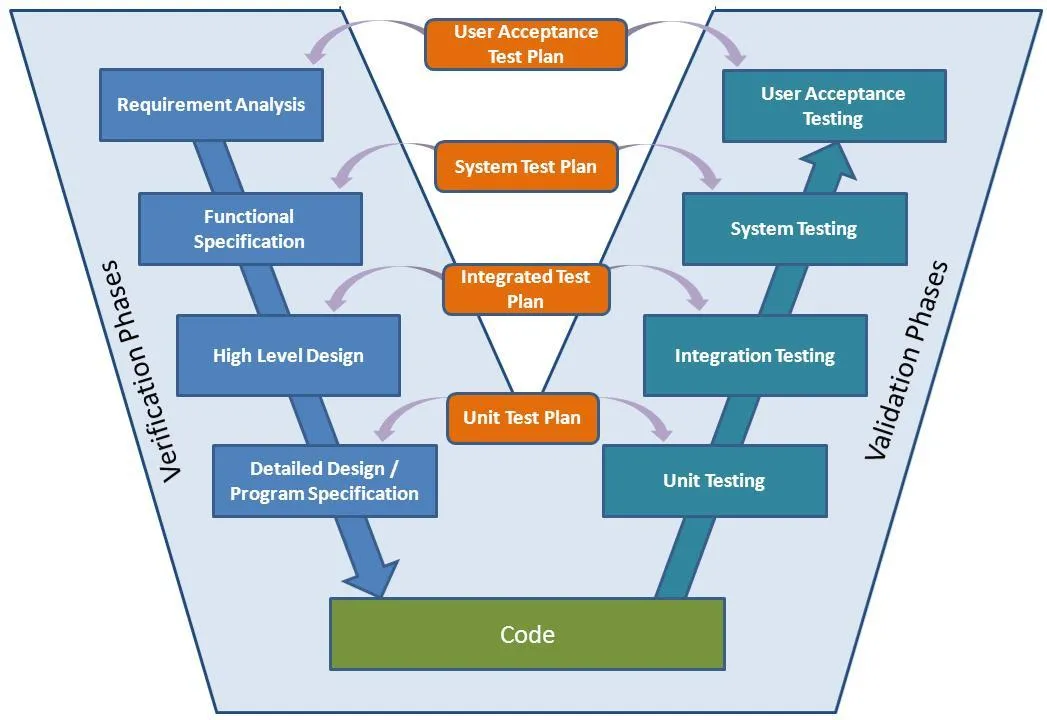
Key Principles of the V model
The V model adheres to a set of core principles that help ensure its effectiveness in software development services:
- Each stage has a corresponding test plan: For every development phase, a matching testing phase is planned in parallel, which ensures early defect detection and traceability.
- Step-by-step development: The methodology advances from one phase to the next only when the previous phase is completed, thereby maintaining discipline and structure.
- Early and continuous testing: Test planning is initiated early in the lifecycle, so that verification and validation activities are embedded from the start rather than delayed until the end.
- Dual focus on verification and validation: The model distinguishes between “Are we building the system right?” (verification) and “Are we building the right system?” (validation), ensuring both technical correctness and alignment with user needs.
- Emphasis on documentation and traceability: Comprehensive documentation at each phase supports traceability from requirements through design to testing and ensures compliance, especially in regulated industries.
- Scalability and suitability for high-reliability projects: The model supports projects with well-defined requirements, strong regulatory demands, or critical system constraints, enabling high quality and reduced risks.
>>>Read more: What is Software Development Life Cycle (SDLC)?
Pros & Cons of the V model in Software Development Life Cycle
Pros
- Clear structure and documentation: The V-Model provides a well-defined sequence of phases and deliverables, which helps project teams maintain transparency and traceability from requirements through to testing.
- Early defect detection: By pairing each development phase with a corresponding testing phase, the V-Model helps identify and fix issues early, reducing the cost and impact of defects later in the cycle.
- High-quality outcomes for stable requirements: When project requirements are well-understood and unlikely to change, the V-Model enables rigorous verification and validation, which supports reliable delivery in regulated industries.
Cons
- Rigid and inflexible structure: The sequential nature of the V-Model makes it difficult to accommodate changes once a phase is completed, which can hinder responsiveness in dynamic or evolving projects.
- Less suitable for projects with unclear or changing requirements: If requirements evolve during development, the V-Model’s fixed design and testing plan can struggle to adapt, increasing risk and rework.
- Resource-intensive and costly for fast-moving or small-scale projects: The extensive documentation, upfront planning, and paired testing phases required by the V-Model can lead to higher costs and slower time-to-market in less stable or smaller projects.
When to apply the V model in software engineering projects?
The V-Model is being applied in real-world enterprise settings across industries such as aerospace, healthcare, finance, and embedded systems, where quality and compliance are paramount. The following case types highlight when your business should consider this model:
- Projects with well-defined and stable requirements
In projects where business needs are fully specified upfront and changes are unlikely, the V-Model supports predictable delivery, rigorous quality assurance, and minimal scope revision.
- High-compliance or regulated industries
Enterprises operating in sectors such as medical devices, aerospace, or banking often apply the V-Model because it supports traceability, documentation, verification, and validation that meet strict regulatory standards.
- Large-scale mission-critical system development
For systems where failure costs are high—such as embedded control systems, automotive safety software, or nuclear control—the V-Model offers structured verification and validation paths that reduce risk and enhance reliability.
- Outsourced projects with a fixed scope and contract
When an enterprise outsources software development under a contract with fixed scope, deliverables, and requirements, the V-Model can provide a clear, auditable lifecycle and facilitate vendor accountability and documentation.

Final Thoughts
We hope that this guide has covered all the crucial aspects related to the V-Model in Software Development Life Cycle model to help you develop a quality software product in the minimum period. The main benefits of the V-Model in Software Development Life Cycle are its standard features and risk-free procedure. But before making the final decision, make sure to thoroughly analyze all relevant factors.
Newwave Solutions has implemented various projects following the V-Model in Software Development Life Cycle, which gives us the expertise to guarantee a successful project for you. Contact us now to create mind-blowing software.
Contact Information:
- Head Office (Hanoi): 1F, 4F, 10F, Mitec Building, Cau Giay Ward, Hanoi City, Vietnam
Branch Office (Tokyo): 1chōme118 Yushima, Bunkyo City, Tokyo 1130034, Japan - Hotline: +84 985310203
- Website: https://newwavesolution.com
- Email: [email protected]
To Quang Duy is the CEO of Newwave Solutions, a leading Vietnamese software company. He is recognized as a standout technology consultant. Connect with him on LinkedIn and Twitter.
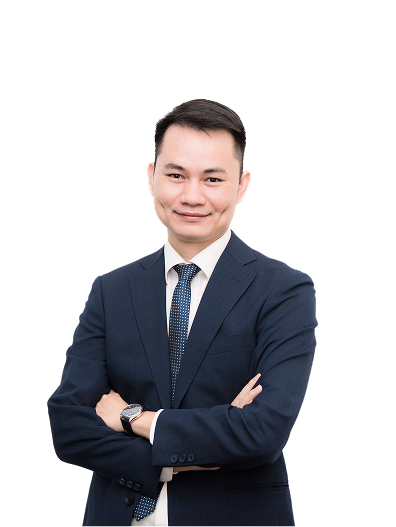
Read More Guides
Get stories in your inbox twice a month.
Let’s Connect
Let us know what you need, and out professionals will collaborate with you to find a solution that enables growth.
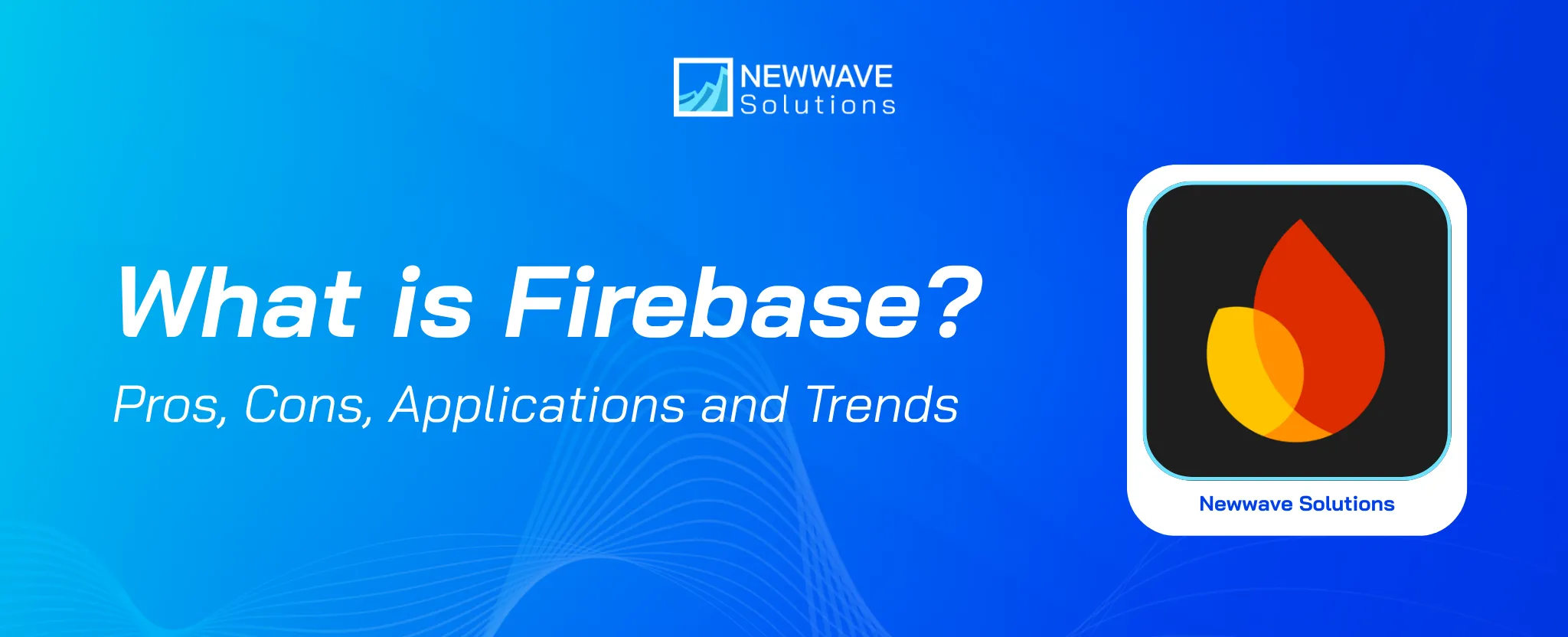
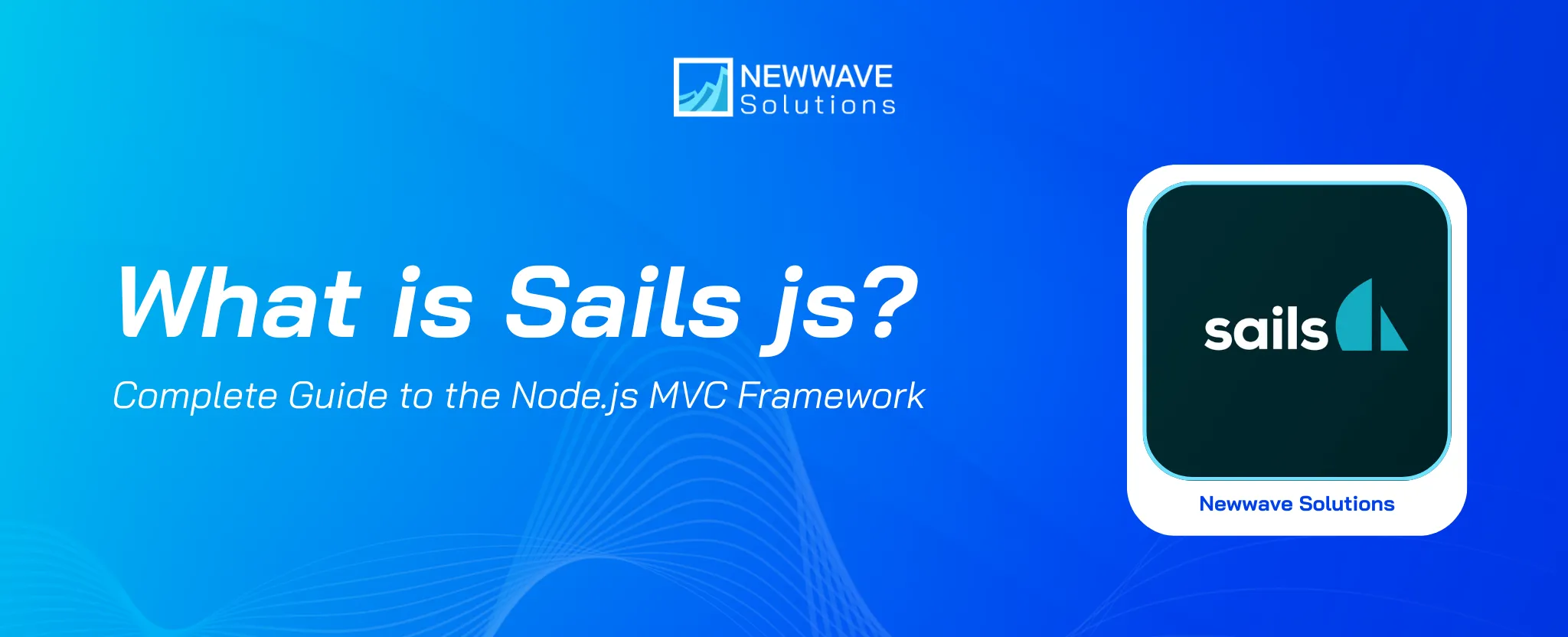


Leave a Reply